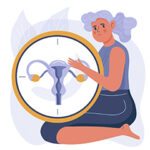Immunization is like a superhero’s shield, crafted not from steel, but from science. It involves giving a vaccine, whether through a quick jab, a sip, or a sniff, to armor up against diseases without facing the villains themselves. This clever trick teaches our bodies to recognize and combat intruders like viruses and bacteria, mimicking the natural immunity gained from battling the disease firsthand. Vaccines are the unsung heroes in our fight for health, offering a safe passage to immunity without the battle scars.
A Glimpse Into the Past: The Dawn of Immunization
Long before the term ‘vaccination’ became a household name, the fight against infectious diseases began with daring experiments and intuitive practices. Picture the 15th century, a time when the concept of disease prevention was as murky as the night skies. Yet, in various corners of the globe, there was a flicker of hope as people deliberately exposed the healthy to smallpox in a crude form of immunization.
Fast forward to 1721, and enter Lady Mary Wortley Montagu, a visionary who introduced smallpox inoculation to Europe after witnessing its practice in Turkey. The real game-changer, however, came with Edward Jenner’s landmark experiment in 1796, where he inoculated a young boy with cowpox and demonstrated immunity to smallpox, coining the term ‘vaccine’ from ‘vacca’, the Latin word for cow.
As the 19th century waned and the 20th dawned, the vaccine landscape burgeoned with Louis Pasteur’s rabies vaccine and an onslaught of discoveries against diseases like influenza and yellow fever.
In India’s Context: A Vaccination
India’s vaccine voyage is equally storied, marked by pivotal moments like the Compulsory Vaccination Act of 1892 and the establishment of vital research institutes in Kasauli and Coonoor. These institutions became the crucibles for vaccine development, producing life-savers like the Influenza and Polio vaccines. The mass BCG vaccination campaign in the mid-20th century and the launch of the National Smallpox Eradication Programme were monumental, culminating in the triumph over smallpox in 1980.
The Present: Universal Immunization Programme (UIP)
Fast forward to today, and India’s UIP stands as one of the globe’s most ambitious public health endeavors, targeting millions of mothers and children with an arsenal of vaccines against daunting foes like polio and tetanus. The UIP’s journey is a testament to progress, with an ever-expanding vaccine repertoire that now includes modern marvels like the Hepatitis B and Pneumococcal conjugate vaccines.


Vaccine Hesitancy: The Roadblock & Reasons
Despite these strides, the path hasn’t been without its thorns. Vaccine hesitancy remains a formidable barrier, fueled by misconceptions about vaccine safety, distrust in the medical fraternity, and a myriad of ethical, moral, and religious concerns. Combatting this hesitancy demands a multi-faceted approach, from engaging community leaders to leveraging media and technology for effective communication.
The Horizon: Future Vaccines and Technologies
As we gaze into the future, the promise of new vaccines against a spectrum of diseases from HIV to cancer sparkles on the horizon, propelled by breakthroughs in biotechnology and information science. Innovations like needle-free vaccine delivery herald a new era of convenience, safety, and compliance, making vaccinations more palatable to the masses.
The immunization journey, from its humble origins to its present-day achievements and future possibilities, is a riveting saga of human ingenuity and perseverance. It’s a reminder of how far we’ve come and a beacon of hope for the health challenges that lie ahead.
Unraveling the World of Immunization: A Comprehensive Guide
Welcome to your one-stop shop for everything immunization-related! Think of this as your personal guide through the twists and turns of a practice that’s as ancient as it is futuristic. From its inception in the murky past to the high-tech horizons of tomorrow, we’ll cover the milestones, the hurdles, and the innovations that have shaped the journey of immunization.
A Leap Back in Time: The Origins of Immunization
Imagine a world without vaccines—quite bleak, right? Our story begins in such a world, back in the 15th century. Back then, the idea of disease prevention was as clear as mud. But humanity, ever resourceful, began experimenting with exposure to diseases like smallpox to build immunity. It was a crude start, but a start nonetheless.
The narrative takes a pivotal turn in 1721 with Lady Mary Wortley Montagu, who, inspired by Turkish practices, introduced smallpox inoculation to Europe. However, the plot thickens with Edward Jenner in 1796, who, using cowpox, laid down the foundational stone for modern vaccination—hence the term ‘vaccine’, derived from ‘vacca’, meaning cow in Latin.
The timeline accelerates into the 19th and 20th centuries, witnessing the explosion of vaccine discoveries, including Louis Pasteur’s rabies vaccine and many more against diseases like influenza and yellow fever.
Zooming Into India: A Trailblazer in Vaccination
India’s own saga in the vaccine realm is nothing short of epic, marked by landmark events like the Compulsory Vaccination Act of 1892 and the establishment of key research institutes. These became the birthplaces of vaccines combating diseases like influenza and polio, setting the stage for mass vaccination campaigns and the ultimate conquest over smallpox in 1980.
The Here and Now: The Universal Immunization Programme (UIP)
Fast forward to the present, and India’s UIP stands tall as one of the most extensive public health initiatives globally. It’s an all-encompassing shield for millions, from pregnant women to children, armed with an ever-growing arsenal of vaccines. This journey from 1985 to today includes the introduction of life-saving vaccines like Hepatitis B and the Pneumococcal conjugate, showcasing monumental progress in public health.
Navigating the Roadblock: Vaccine Hesitancy
Despite the leaps and bounds in vaccine development and deployment, there’s a snag—vaccine hesitancy. This obstacle is rooted in a mix of safety concerns, mistrust, and varying personal beliefs. Overcoming this challenge requires a blend of strategies, from community engagement to savvy communication tactics, ensuring that the message of vaccination’s critical role in public health is heard loud and clear.
Conclusion: The Future of Vaccines
Peering into the future, we see a landscape brimming with potential. The advent of new vaccine technologies and the promise of needle-free delivery systems are set to revolutionize how we view and receive vaccinations. This forward momentum isn’t just about combating existing diseases but also about pioneering vaccines for conditions like HIV, cancer, and even lifestyle diseases.





